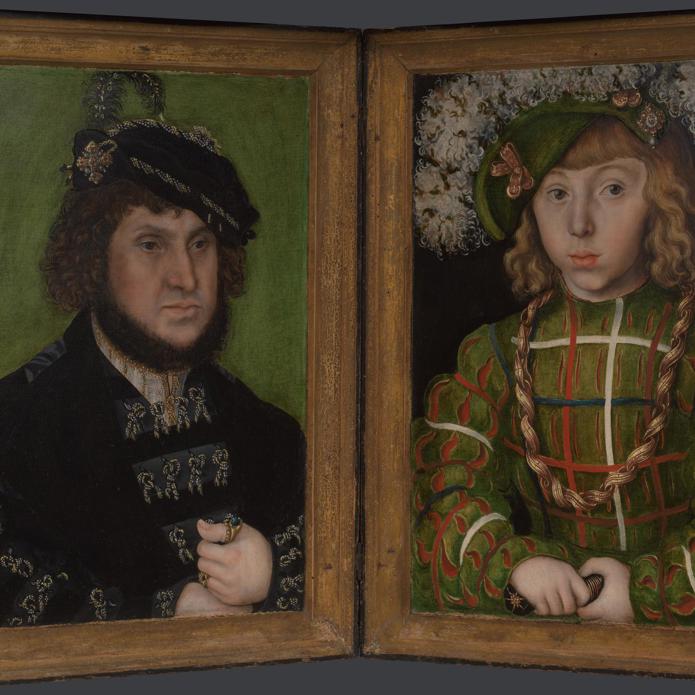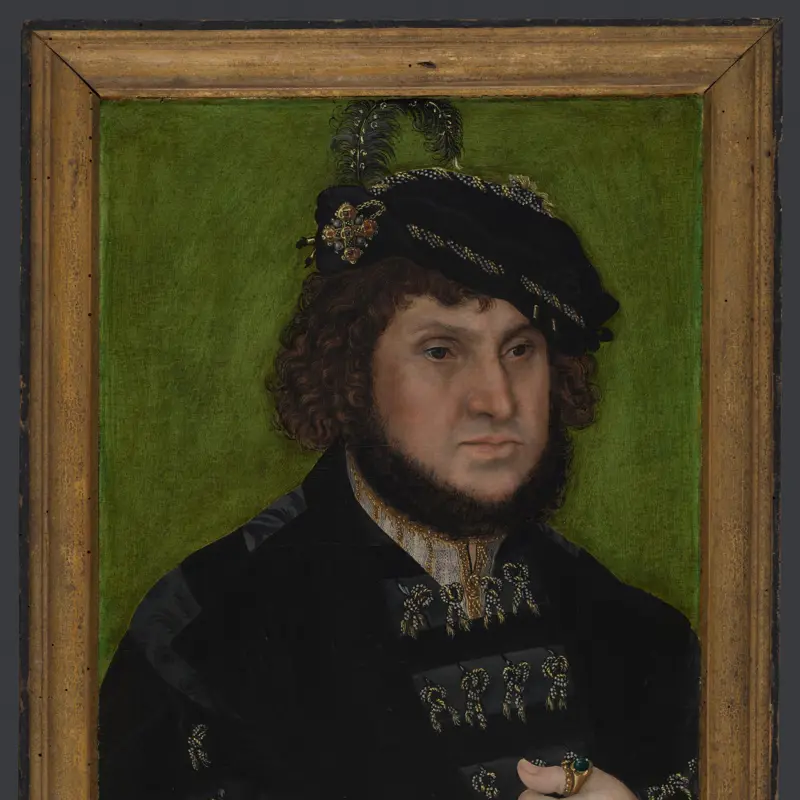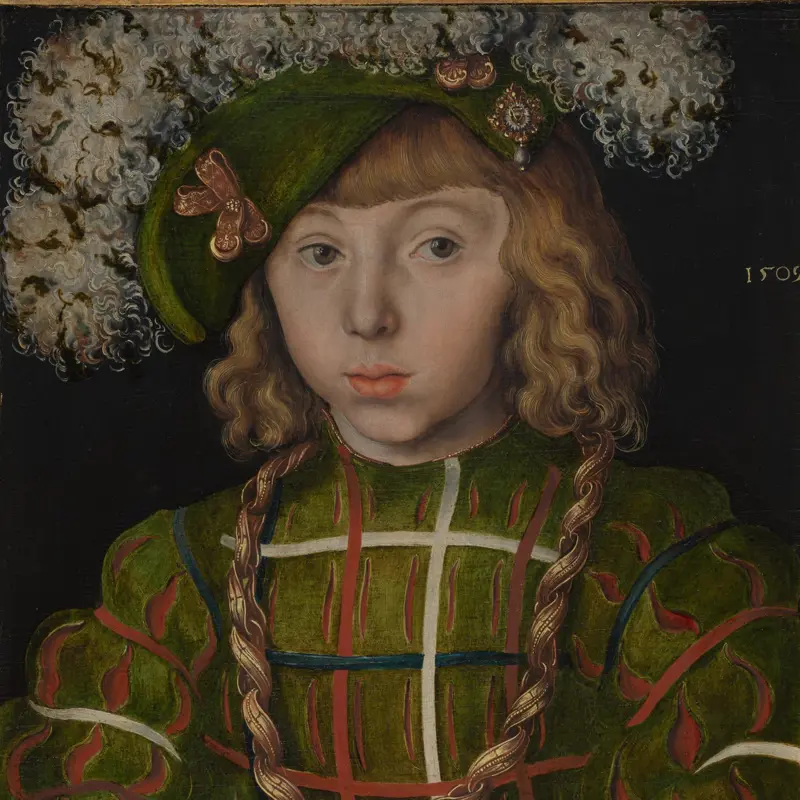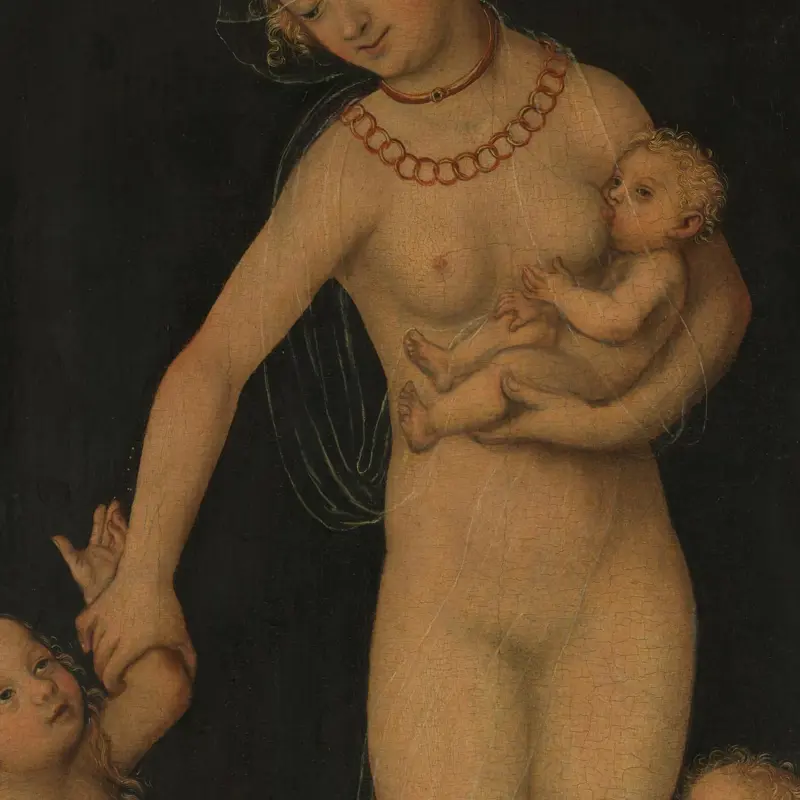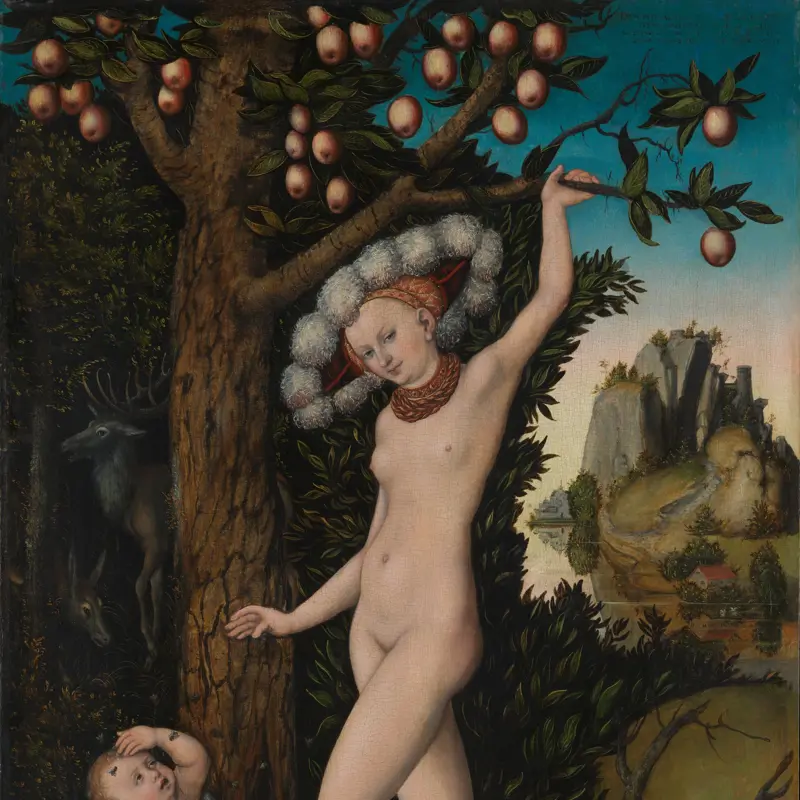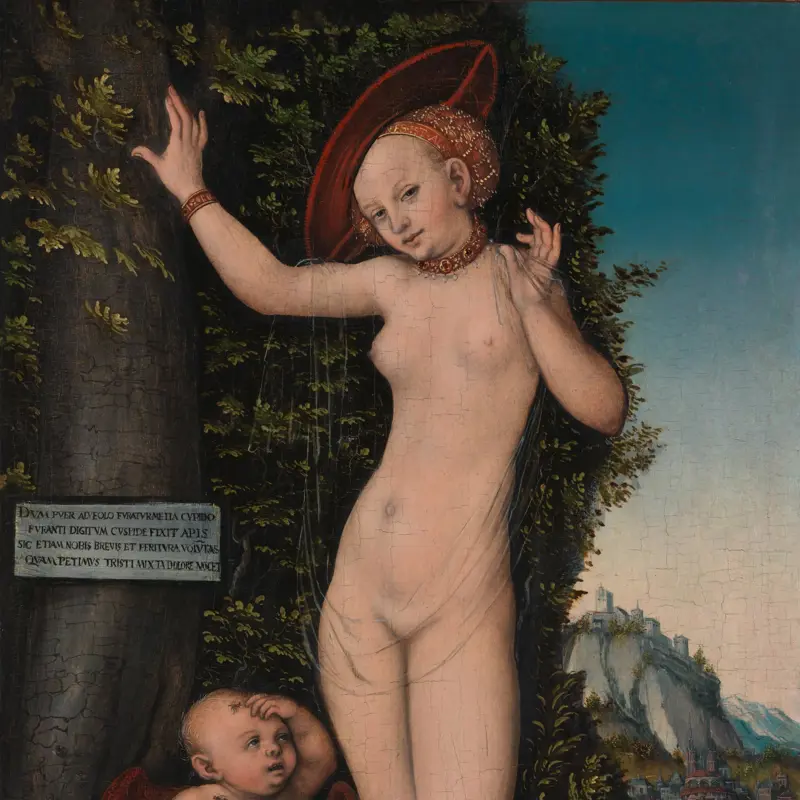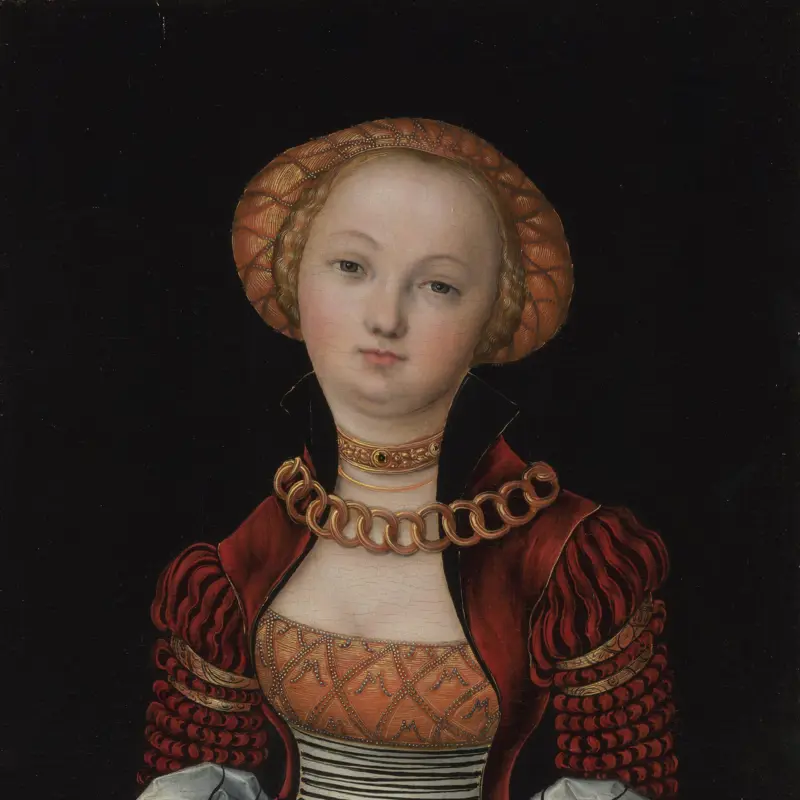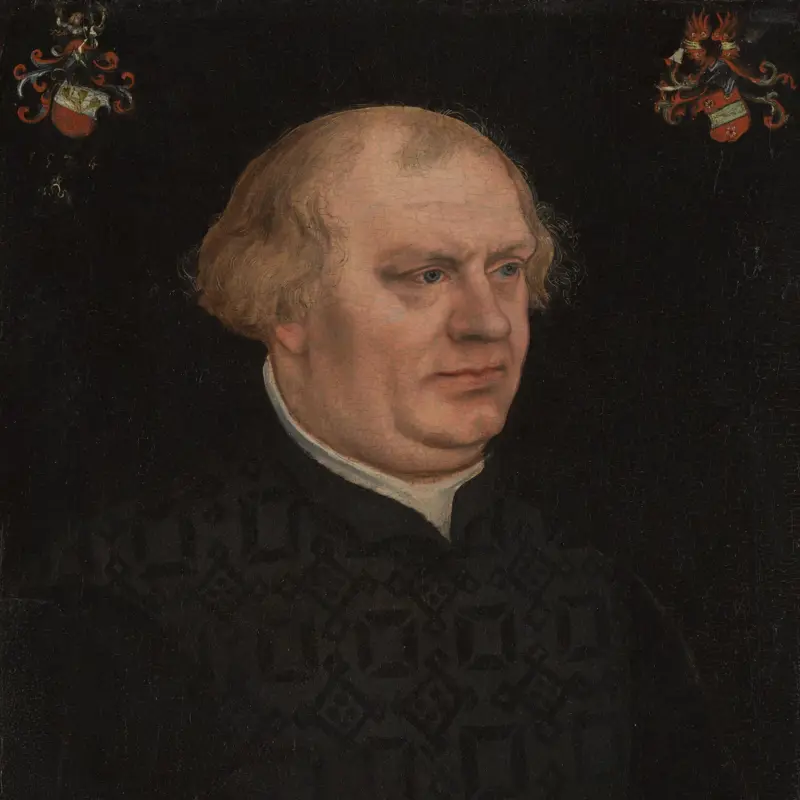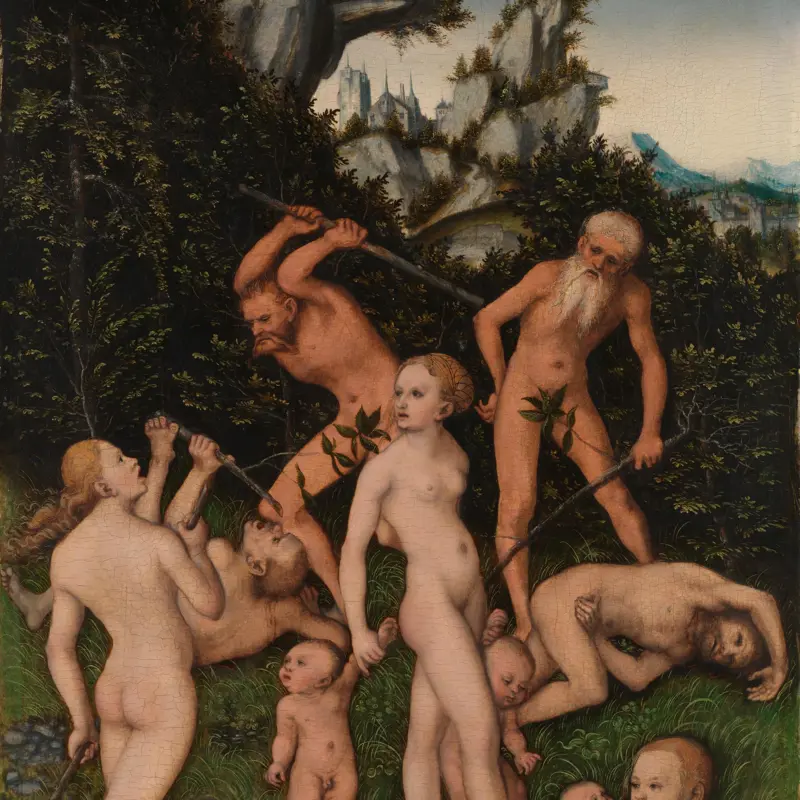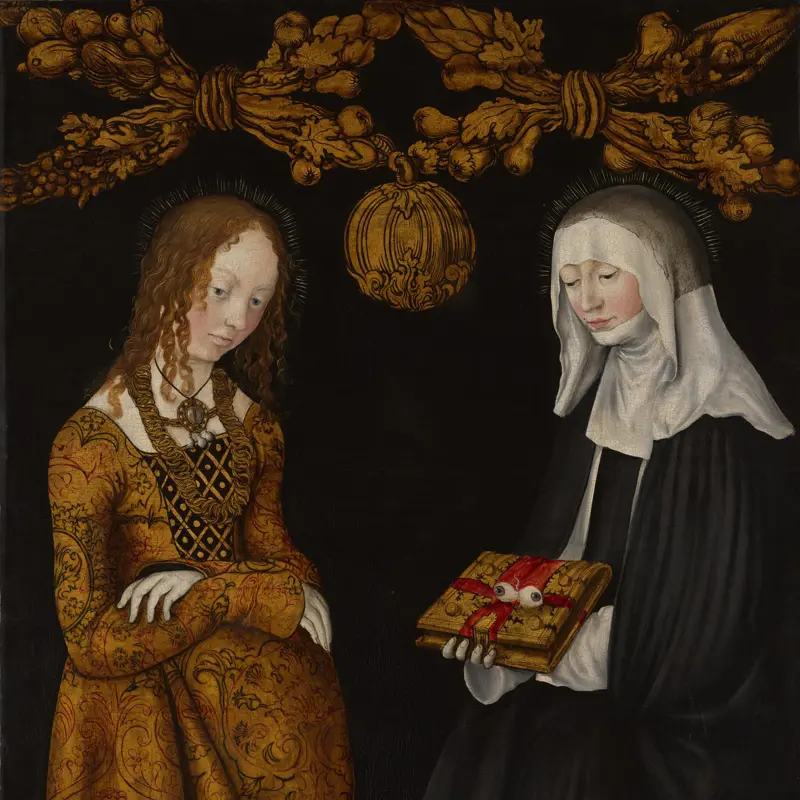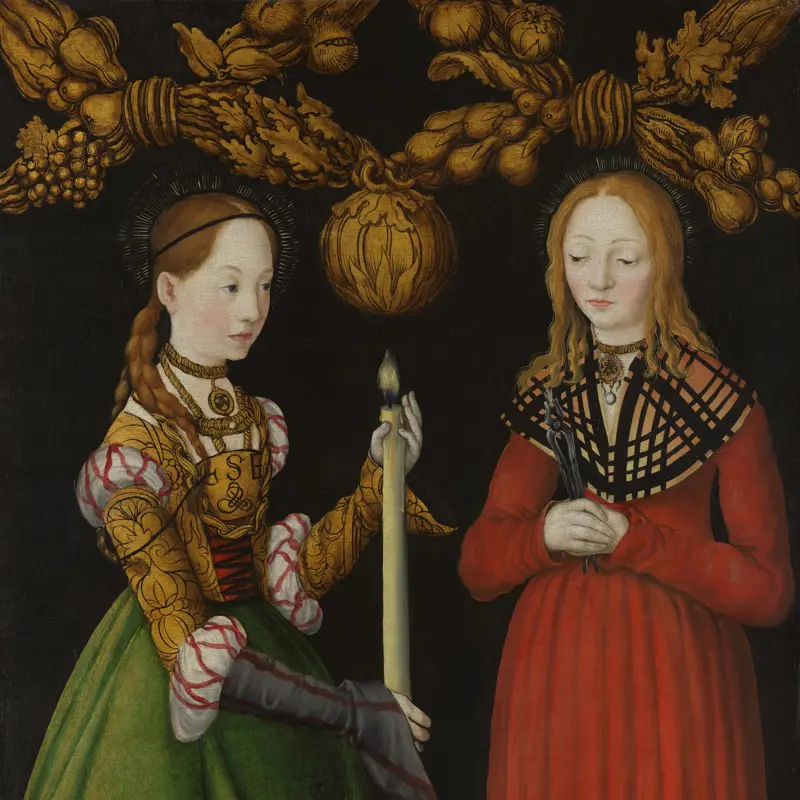Lucas Cranach the Elder, 'Portrait of Johann the Steadfast', 1509
About the work
Overview
Johann the Steadfast, Elector of Saxony from 1525 to 1532, would have been about 38 when this portrait was made. He wears a sumptuous black hat and coat, both decorated with gold thread and seed pearls.
This panel is part of a diptych (a painting made of two parts) – the conjoining panel depicts Johann’s son, Johann Friedrich the Magnanimous. Traditionally, portrait diptychs would show a man and his wife, or a recently engaged couple, but Johann’s wife, Sophie of Mecklenburg, had died in childbirth.
Cranach painted Johann the Steadfast’s portrait many times throughout the Elector’s life, but this is one of few surviving individual portraits of Johann the Steadfast from before his reign as elector; the other representations are of Johann with his brother, Friedrich the Wise.
Key facts
Details
- Full title
- Portrait of Johann the Steadfast
- Artist
- Lucas Cranach the Elder
- Artist dates
- 1472 - 1553
- Part of the group
- Diptych: Two Electors of Saxony
- Date made
- 1509
- Medium and support
- Oil on wood
- Dimensions
- 41.3 × 31 cm
- Acquisition credit
- Bought, 1991
- Inventory number
- NG6538
- Location
- Room 55
- Collection
- Main Collection
- Frame
- 16th-century German Frame (original frame)
Provenance
Additional information
Text extracted from the ‘Provenance’ section of the catalogue entry in Susan Foister, ‘National Gallery Catalogues: The German Paintings before 1800’, London 2024; for further information, see the full catalogue entry.
Exhibition history
-
2008Renaissance Faces: Van Eyck to TitianThe National Gallery (London)15 October 2008 - 18 January 2009
-
2014Strange Beauty: Masters of the German RenaissanceThe National Gallery (London)19 February 2014 - 11 May 2014
-
2020Cranach: Artist and InnovatorCompton Verney14 March 2020 - 3 January 2021
Bibliography
-
1972D. Koepplin, 'Lucas Cranach der Ältere, Zeichnungen', Kunstchronik, XXV, 1972, pp. 345-8
-
1974D. Koepplin, 'Zwei Fürstenbildnisse Cranachs von 1509', Pantheon, 1974, pp. 25-34
-
1974D. Koepplin and T. Falk, Lukas Cranach: Gemälde, Zeichnungen, Druckgraphik, (exh. cat. Kunstmuseum, 15 June - 8 September 1974), Basel 1974
-
1978M.J. Friedländer and J. von Rosenberg, The Paintings of Lucas Cranach, revised edn, London 1978
-
1990A. Dülberg, Privatporträts: Geschichte und Ikonologie einer Gattung im 15. und 16. Jahrhundert., Berlin 1990
-
1992National Gallery, The National Gallery Report: April 1991 - March 1992, London 1992
-
1994E. Rebel, 'Lucas Cranachs Porträtkunst: Personendarstellungen zwischen Vitalität und Formel', in C. Grimm, J. Erichsen and E. Brockhoff, Lucas Cranach: Ein Maler-Unternehmer aus Franken, Augsburg 1994, pp. 131-8
-
1995R. White and J. Pilc, 'Analyses of Paint Media', National Gallery Technical Bulletin, XVI, 1995, pp. 85-95
-
1997R. Billinge et al., 'Methods and Materials of Northern European Painting in the National Gallery, 1400-1550', National Gallery Technical Bulletin, XVIII, 1997, pp. 6-52
-
1999J. Dunkerton, S. Foister and N. Penny, Dürer to Veronese: Sixteenth-Century Painting in the National Gallery, London 1999
-
2001
C. Baker and T. Henry, The National Gallery: Complete Illustrated Catalogue, London 2001
-
2007B. Brinkmann, Cranach (exh. cat. Städel Museum, 23 November 2007 - 17 February 2008; Royal Academy of Arts, 8 March - 8 June 2008), London 2007
-
2008L. Campbell et al., Renaissance Faces: Van Dyck to Titian (exh. cat., The National Gallery, London), London 2008
-
2008L. Syson et al., Renaissance Faces: Van Eyck to Titian (exh. cat. The National Gallery, 15 October 2008 - 16 January 2009), London 2008
-
2024S. Foister, National Gallery Catalogues: The German Paintings before 1800, 2 vols, London 2024
About this record
If you know more about this work or have spotted an error, please contact us. Please note that exhibition histories are listed from 2009 onwards. Bibliographies may not be complete; more comprehensive information is available in the National Gallery Library.
Images
About the group: Diptych: Two Electors of Saxony
Overview
These joined portraits depict two future electors of Saxony, Johann the Steadfast and his son, Johann Friedrich the Magnanimous – Cranach worked as court painter to successive electors from 1505 until his death in 1553. The coats of arms on the back of the right panel help to confirm their identities.
The portraits have complementary colour schemes: the green of the background in the father’s portrait is echoed by the green of his son’s clothing, while the black background in the son’s portrait matches his father’s clothing. Johann Friedrich dominates more of the composition than his father and he faces towards the viewer, even though the convention was to place each sitter at a three-quarter turn toward the other.
The frame is original: paint has been detected on the inner edges of the frame, which suggests that the paintings were made after the wooden panels had been fitted into it.

